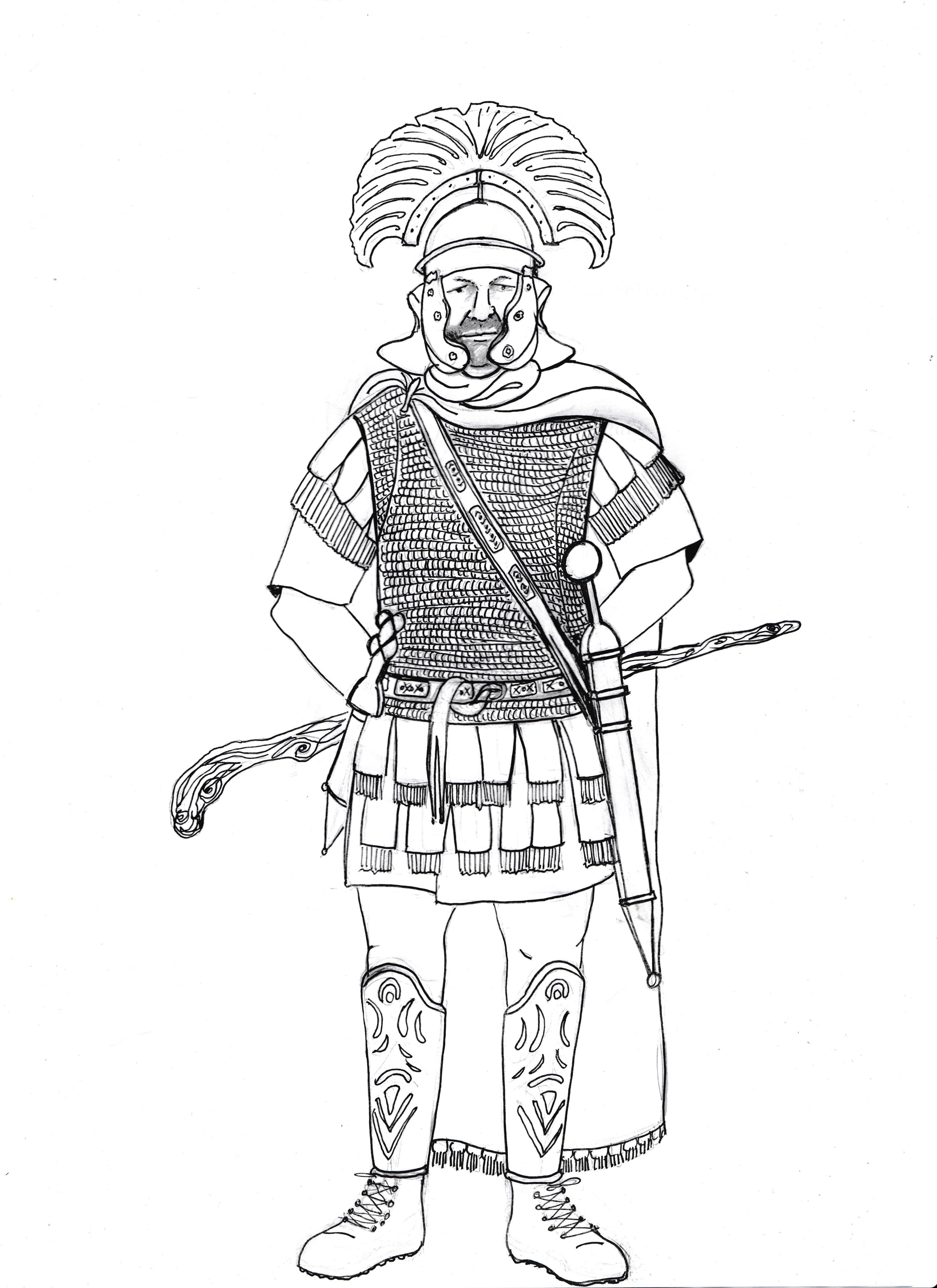Centurions and Decurions - the officers at the Fort
These teacher notes provide information on the Centurions and Decurions who were the officers at the fort. You can download a copy of these teacher notes below.
Download: Centurions and Decurions - the officers at the Fort PDF resource here (509 KB)

The man who was in charge of a century of infantry soldiers (80 soldiers) was called a centurion. The man who was in charge of a turma of cavalry soldiers (30 soldiers) was called a decurion.
The centurion or decurion was usually a soldier who had worked his way up the ranks. They were responsible for training the men in their own centuries/turmae and leading them into battle. They also carried daily duties such as assigning duties, making inspections and checking that any work was done properly as well as maintaining discipline amongst the soldiers. The decurion also had to keep an eye on the health of the horses.
Centurions often wore a helmet with a distinctive transverse crest made out of horsehair or feathers. They carried their swords on their left-hand side and often wore greaves to protect their legs The Centurion always carried a stick, which was a badge of office, but was also used on the men for casual corporal punishment.
Centurions and decurions were paid more than the other soldiers and could afford to buy highly decorated equipment. The cavalry in particular liked very fancy armour and equipment and the decurions would have looked very colourful when wearing their full kit.
They lived in a set of rooms within the barracks, either with their junior officers or their wife and family. They also had slaves, which included grooms to look after the decurions’ horses.




